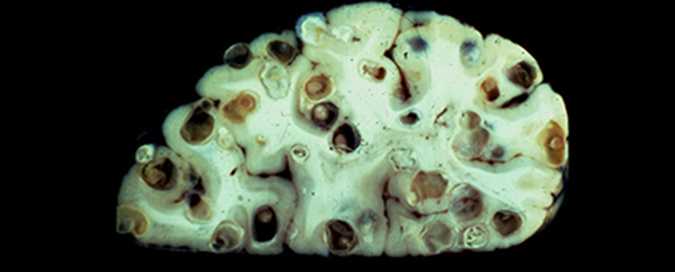Neurocysticercosis: A leading cause of acquired epilepsy worldwide

Neurocysticercosis is the most severe form of cysticercosis, an infection caused by ingesting tapeworm eggs (Taenia solium). Once these eggs are in the bloodstream, the larvae can travel into the brain and form cysts, causing neurocysticercosis (NCC).
Symptoms of NCC can include seizures, headaches, or dizziness, although some patients with NCC show no symptoms. The greatest risk of getting NCC is through close contact with a tapeworm carrier. It is also possible for people with a tapeworm infection to infect themselves with NCC, a process called autoinfection.
NCC is considered one of five neglected parasitic infections (NPIs), a group of parasitic diseases that have been targeted by CDC as priorities for public health action based on the
- Number of people infected
- Severity of the illnesses
- Ability to prevent and treat them
These infections are considered neglected because relatively little attention has been devoted to their surveillance, prevention, and/or treatment.
Clinicians can learn more about NCC through CDC’s new online CE unit “Neurocysticercosis: Diagnosis and Management of Patients Living in the United States,” designated for a maximum of 1.5 AMA PRA Category 1 Credits™ of continuing medical education or 1.3 contact hours of continuing nursing education credits.
Fast Facts:
- Approximately 50 million people are infected worldwide
- NCC is the leading cause of acquired epilepsy in many parts of the world, including Latin America, Asia, and sub-Saharan Africa. On average, 29% of epilepsy in endemic countries is caused by NCC. In some countries, the average may approach 50%.
- People get neurocysticercosis after ingestion of tapeworm eggs. (Neurocysticercosis is NOT acquired from eating undercooked infected pork.)
- Up to 2% of U.S. emergency department visits for seizures are caused by neurocysticercosis
- In the United States, an average of more than 2,300 hospitalizations annually are due to neurocysticercosis.
- Average charges associated with hospitalizations from neurocysticercosis total $37,600 per patient, with an estimated 43.9% paid by Medicaid.
- Page last reviewed: December 1, 2016
- Page last updated: December 5, 2016
- Content source:


 ShareCompartir
ShareCompartir